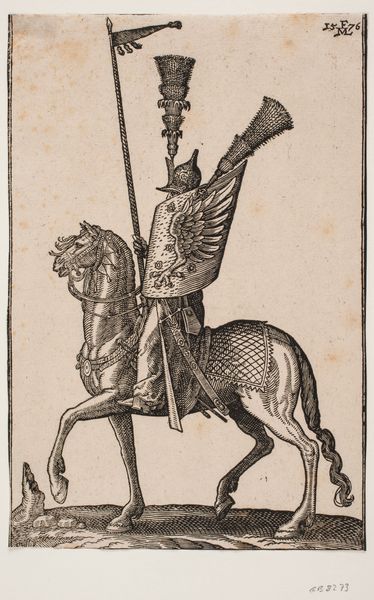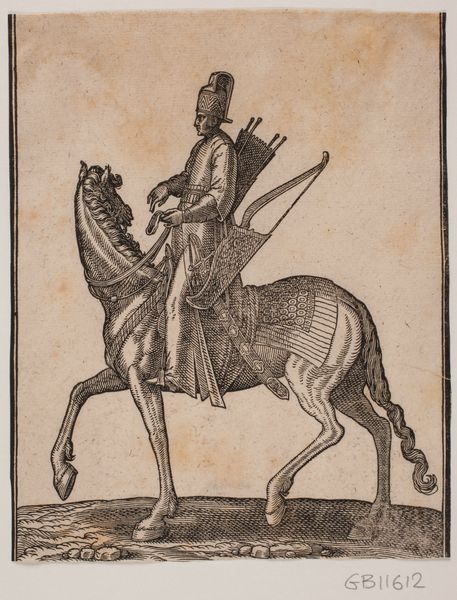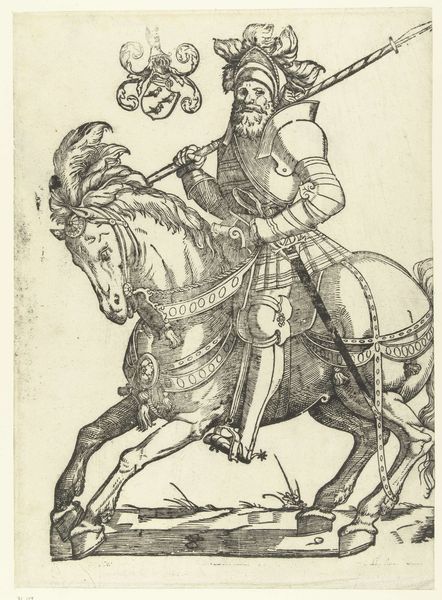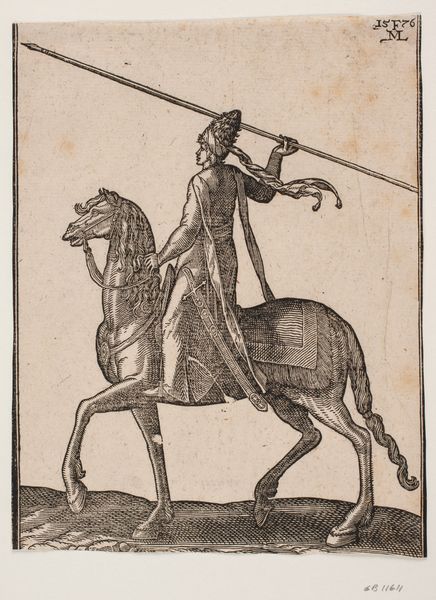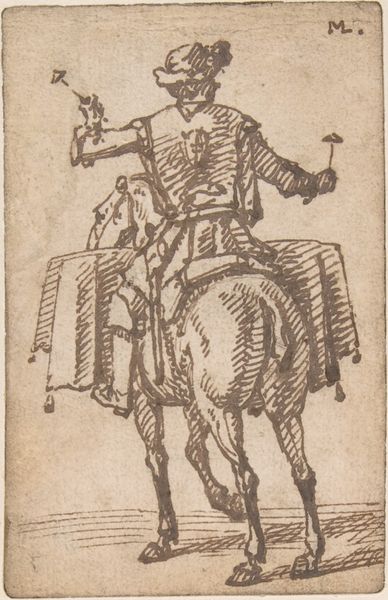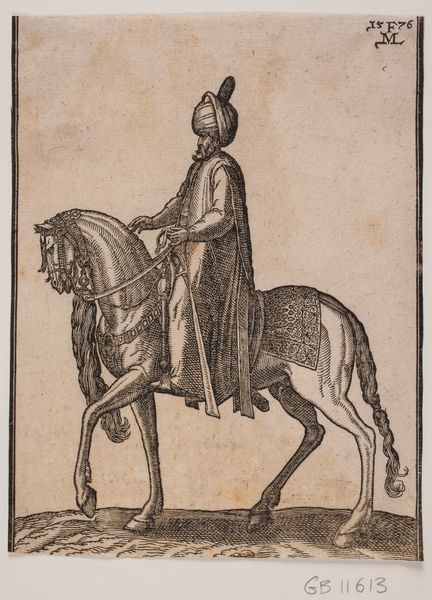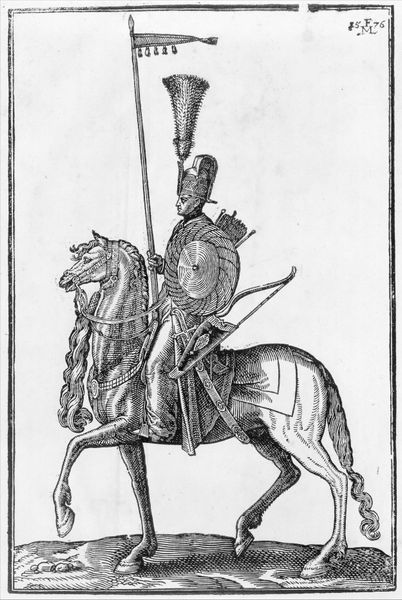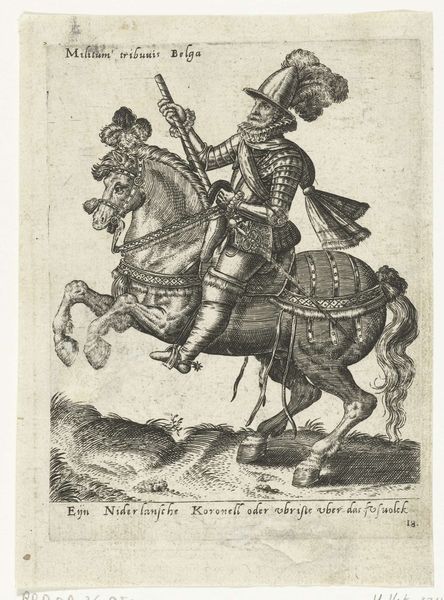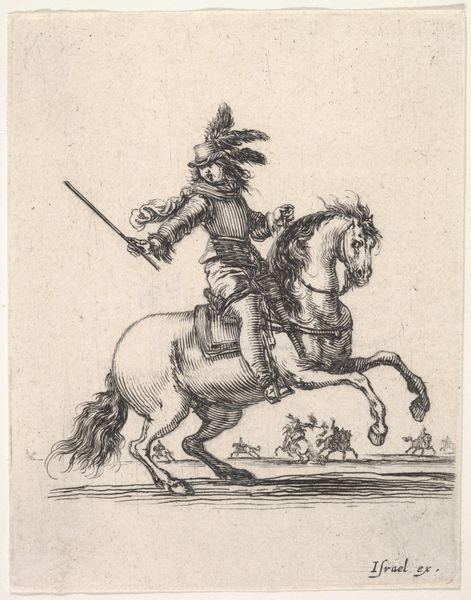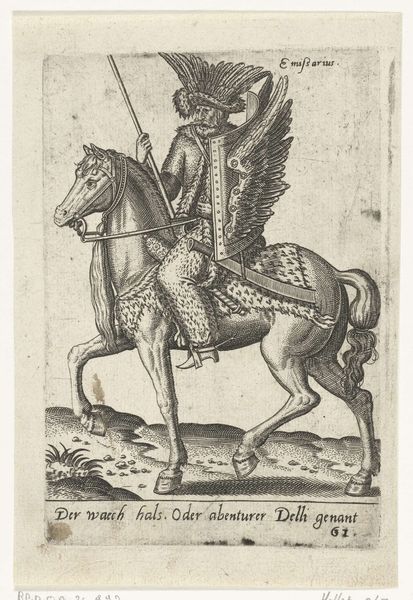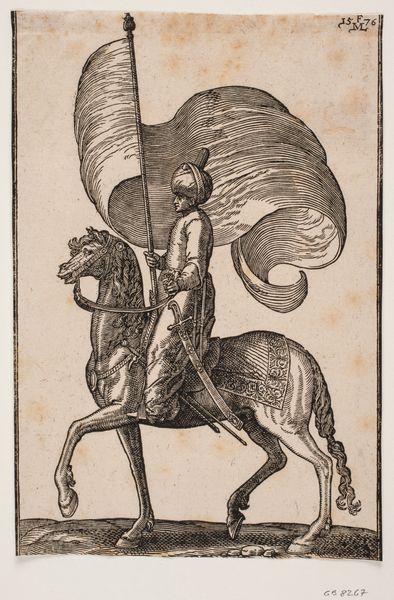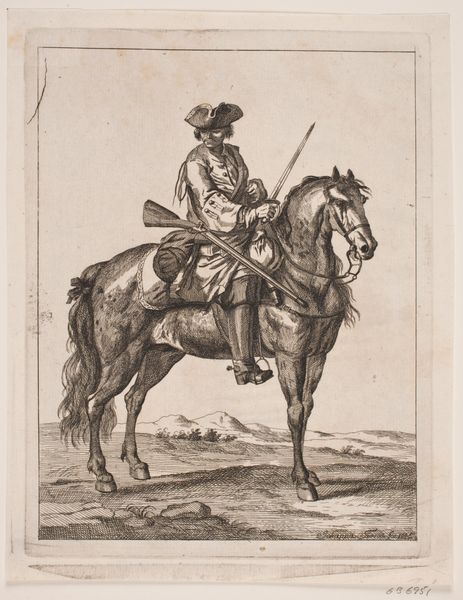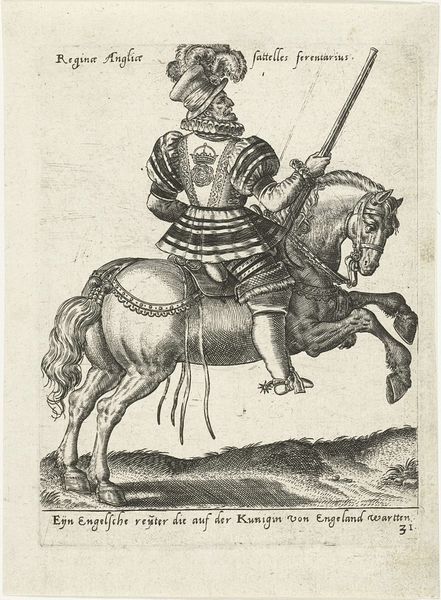
Bereden soldat, profil mod v.; lanse med vimpel, bue ved siden, cirkulært skjold, pilekogger; hovedbeklædning med fjerbusk 1576
0:00
0:00
drawing, print, woodcut, engraving
#
drawing
#
medieval
# print
#
figuration
#
woodcut
#
history-painting
#
engraving
Dimensions: 235 mm (height) x 156 mm (width) (bladmaal)
Curator: Let's explore "Bereden soldat, profil mod v.; lanse med vimpel, bue ved siden, cirkulært skjold, pilekogger; hovedbeklædning med fjerbusk" by Melchior Lorck, dating back to 1576. It's currently held at the SMK, Statens Museum for Kunst. Editor: Whoa, a seriously imposing figure! The textures are amazing for a woodcut. I am struck by the confidence of the horse and the soldier; it really leaps from the print, don’t you think? Curator: Absolutely. This engraving reveals layers of the Ottoman presence in 16th-century Europe, serving as visual documents of cultural encounter and the construction of identities in conflict and alliance. Editor: It’s strange, this figure both attracts and unsettles. What is this person defending and at what cost? The symmetry almost has a hypnotic effect, and there is a fragility due to it being rendered only in black and white. What do you think it all represents? Curator: Consider the details. Lorck, as a draughtsman and printmaker, navigated the complexities of representing “the other.” The artwork presents the subject according to very European aesthetic standards, thereby softening the threat perceived from the East, but it nevertheless contributes to the narrative around this geographical and ideological “border.” Editor: A border, both physical and imagined. The high level of detail is fascinating; the way the horse's tail has been crafted looks very painstaking and it brings the character to life in a way, despite it feeling so ancient. And those weapons! Curator: It's essential to reflect on Lorck's position within a network of political and cultural power. His depictions were not neutral, and the power dynamics influenced artistic and social reception of his art. Editor: I see this piece as an artifact—a reminder of the world as understood and portrayed during a time of significant change and cultural exchange. Curator: Exactly. This print invites us to consider the gaze—the historical gaze that produced it and our own gaze, centuries later, trying to interpret it through various different contemporary lenses. Editor: Agreed. And that feathered headpiece… I wonder what that was like in real life.
Comments
No comments
Be the first to comment and join the conversation on the ultimate creative platform.
